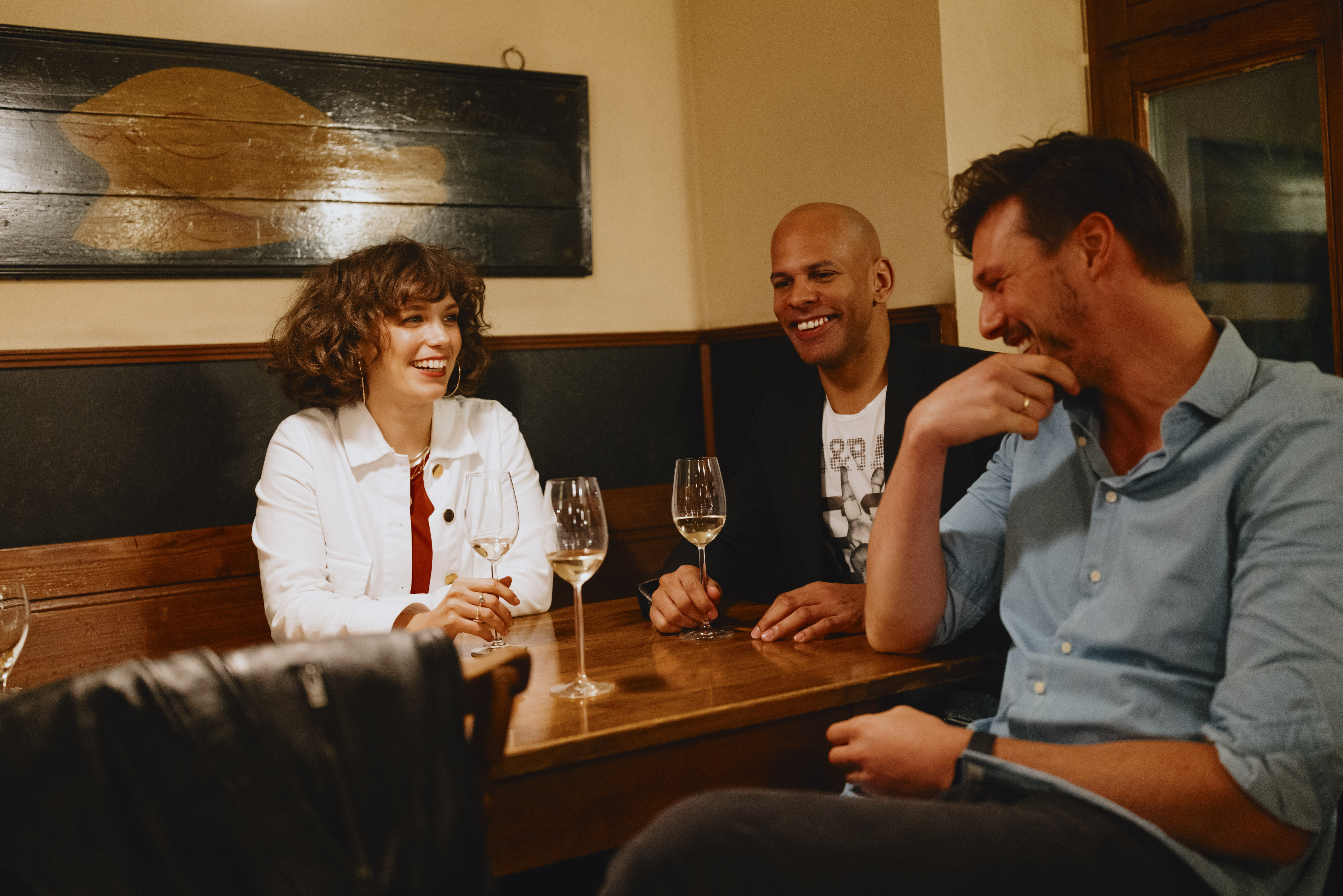From traditional festivals to award-winning international cuisine
Whether it’s haute cuisine or Swabian specialities, fine wines or refreshing beers, celebrating at traditional festivals or hiking through vineyards – there are many ways to discover and experience culinary delights in the Stuttgart region.
The region is home to no fewer than 22 Michelin-starred restaurants, eight of which are in the state capital itself: “Zauberlehrling”, “Hupperts”, “Délice”, “Speisemeisterei”, “Wielandshöhe”, “5”, “Hegel Eins” and a new addition in 2024, “Zur Weinsteige”. With the “Speisemeisterei”, Stuttgart has also been offering two-star dining again since 2022. The star that shines the highest, at least in geographical terms, is the one above the “Wielandshöhe” restaurant, where you can not only enjoy exquisite food but also a fantastic view of the Stuttgart basin below. Gourmets who venture beyond the city limits will also find plenty to enjoy in a total of 14 Michelin-starred restaurants.
While it might not come with Michelin stars, the regional Swabian cuisine is actually really good. Visitors to the Stuttgart region simply have to try “Maultaschen” (Swabian ravioli), “Gaisburger Marsch” (Swabian beef stew) or lentils with “Spätzle” (Swabian pasta). These are among the most popular Swabian dishes, together with roast beef, potato salad, “Kässpätzle” (Swabian pasta with cheese) and “Ofenschlupfer” (a Swabian twist on French toast). Some of them are also the ultimate culinary expression of Swabian thrift: the leftovers of the day end up in the soup pot or hidden inside pasta dough. Numerous legends surround the origins of the “Swabian Maultasche”, which is recognised as a Protected Geographical Indication in the EU. According to one of them, the Cistercian monks of Maulbronn Monastery, which may have contributed to the name “Maultasche”, did not want to go without meat during Lent. Without further ado, they hid the forbidden ingredient from the eyes of the Lord inside some pasta dough. This also earned the “Maultasche” its popular nickname “Herrgottsb'scheißerle”, which translates loosely as the “cheaters of God”. The most popular snack is the pretzel, which is eaten – with or without butter – at any time of day. Legend has it that it was created out of necessity in the 15th century by a baker, who was told he would be spared from execution if he baked a pastry through which the sun could shine three times.
Swabian specialities are best enjoyed in the traditional wine cellars or temporary “Besenwirtschaften”, which are private wine bars opened by wine-growers. They hang a broom on the door as a sign that the “Besenwirtschaft” is open, and only serve their own wine in the region’s typical glasses with handles.
A particularly wide selection of fine wines can be found at the “Stuttgarter Weindorf” wine festival, which is held in late summer. With a total of around 500 different Württemberg wines on offer, even Bacchus himself would be on cloud nine. This annual wine festival, which lasts around two weeks, takes place on Marktplatz and Schillerplatz, as well as in Kirchstraße. Swabian specialities and international delicacies, a varied programme of musical events and a unique atmosphere round off the festival.
A thirst for wine leads to a thirst for knowledge. This can be quenched in a half-timbered building dating back to 1907 that houses the Stuttgart Museum of Viniculture. Here, in the “Alte Kelter” wine press in the village of Uhlbach, visitors can explore 2,000 years of wine-growing history. During a tour of the museum, they will also learn about historical and contemporary wine-making techniques, sniff characteristic fruity aromas from the bouquet of the wines and discover what the Swabian term “Bodagfährtle” is all about. Visits to the Stuttgart Museum of Viniculture can also be arranged as part of the many tours organised by Stuttgart-Marketing GmbH. The activities on offer range from traditional wine tastings to a combination of an excursion into the countryside and a tour of the museum. Visitors then have an opportunity to relax and savour the contents of the museum’s wine cellar.
The Stuttgart Wine Tour lets visitors experience the wonderful vineyard scenery on board a red electric bus. Wine connoisseurs and nature lovers can hop on and off at nine stops and visit various wine estates, the Stuttgart Museum of Viniculture or the Sepulchral Chapel on Württemberg Hill.
In Stuttgart, you can raise a toast not only with wine but also with beer. Every year, the amber nectar flows freely at the Stuttgart Beer Festival, which is held on the “Wasen” festival site on the banks of the Neckar river. Here, hair-raising fairground rides and a vast array of food stalls attract over four million visitors every autumn. Naturally, the eight festival tents and the “Albdorf” food market, which treat guests to beer, regional cuisine and lively on-stage entertainment throughout the three-week festivities, are not to be missed. There are also numerous other traditional festivals that take place in the Stuttgart region every year, such as the Cabbage Festival or the “Fellbacher Herbst” harvest festival.
